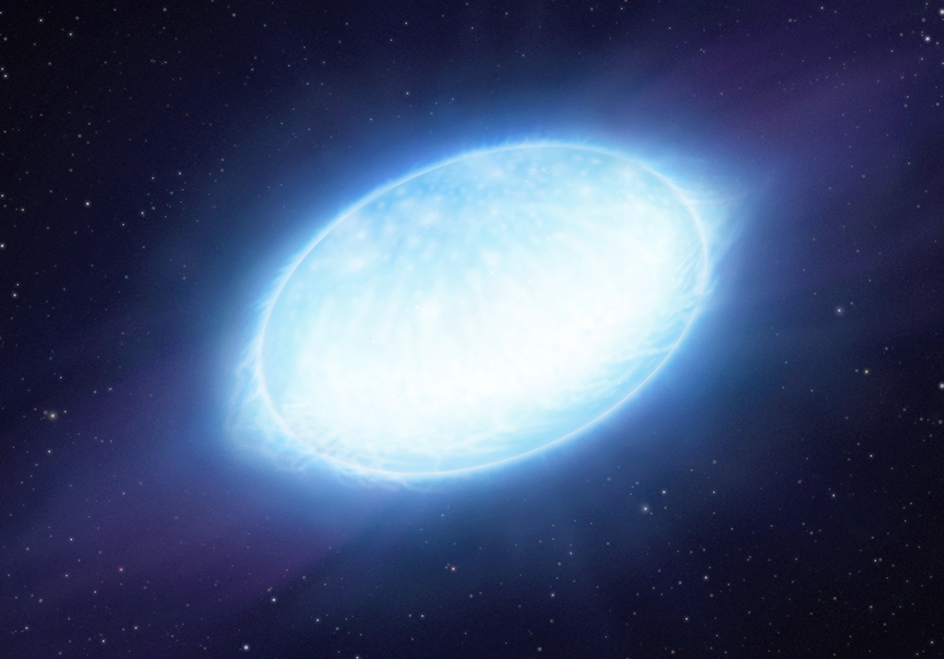Achernar, << a KUR nahr, >> also known as Alpha Eridani, ranks as the 10th brightest star in the sky. As seen from Earth, only the sun and eight other stars shine more brightly. Achernar is the brightest and southernmost prominent star of the constellation Eridanus, the River. The name Achernar comes from Arabic words meaning end of the river. Achernar appears in Earth’s southern sky and cannot be seen from much of the Northern Hemisphere.

Achernar is a main-sequence star. Main-sequence stars produce most of their energy by fusing (combining) hydrogen nuclei in their cores. Achernar’s mass (amount of matter) measures 6 to 8 times that of the sun. The more massive a star is, the more quickly it uses up its hydrogen fuel. Astronomers therefore know that Achernar must be rather young for a star, probably no more than a few hundred million years old.
Achernar’s bluish-white color results from its relatively high surface temperatures, roughly 14,000 to 19,000 K. One kelvin (K) equals one Celsius degree above absolute zero (–273.15 °C). Because of its large size and high surface temperatures, Achernar gives off roughly 3,000 to 5,000 times as much light as the sun does.
Achernar spins on its axis extremely rapidly, causing its equator to bulge outward. In fact, Achernar’s equator bulges more dramatically than that of any other star known. At its equator, Achernar’s diameter measures about 12 times that of the sun. The distance between Achernar’s poles, however, measures less than 8 times the sun’s diameter. Achernar’s equator also appears much hotter than its poles.
Achernar lies about 144 light-years from Earth. One light-year is the distance light travels in a vacuum in a year, about 9.46 trillion kilometers.
Achernar has the spectral type B3V. For more information on spectral classification, see Star (The Hertzsprung-Russell diagram) .
